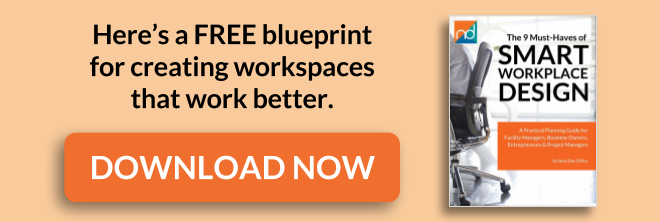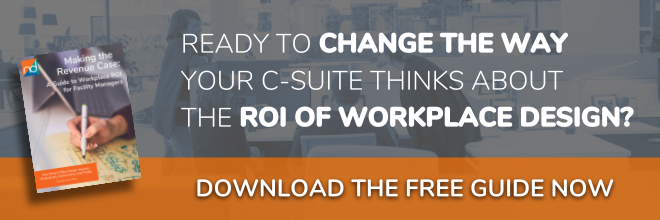5 Things Every CEO Needs to Know About Workplace Design
By Matt Brady

What You Need to Create a Professional Space That Engages Employees, Boosts Productivity and Builds Company Culture
Office space used to be a place for your staff and your stuff.
Then, everything changed.
Technology transformed how, when and where we work. Information was crowned king. Creativity and collaboration became indispensable. And knowledge workers became the center of the workplace universe.
Today, real estate is no longer a simple static budget item and offices are more than just cost-centers.
The best work environments are reflections of a company’s values, passion and people. Well-designed workplaces are powerful business tools that impact productivity and generate revenue.
If you’re an owner, president, or chief executive officer planning a workplace move, renovation, or expansion, here are five important things to keep in mind before you start sketching out seating arrangements for the sales department.
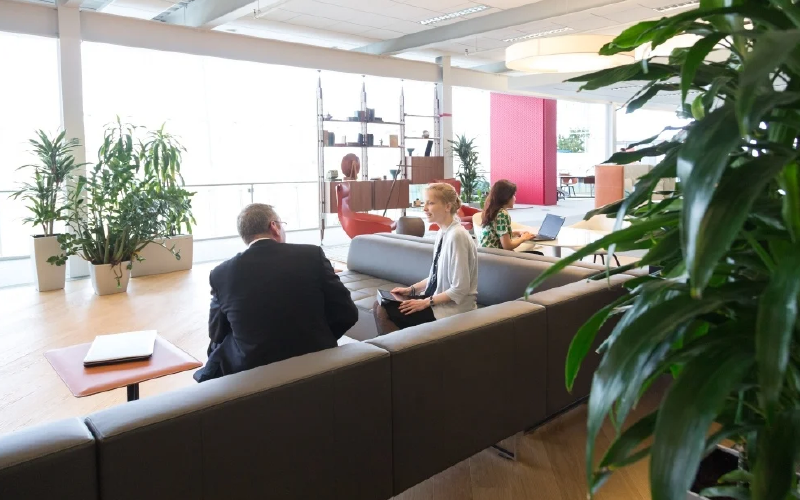
1. Design with your people in mind.
Put away your tape measure.
The days of focusing on “density” are done.
You can’t determine the effectiveness of an office by just maximizing how many employees fit per square foot. Today, you need to do more than minimize costs and maximize space. You need to have conversations.
Great workplace design starts with your people.
The men and women who drive the modern workplace are more important than ever. They are more than employees or end-users. They are your company.
Involve them in the planning, execution and iteration of the space.
Listen to what they say. Watch what they do.
Give them what they need.
People are your most valuable asset. If they’re happy and engaged, they generate excitement within the company that can improve morale, recruitment, retention and reputation.
Engaged employees are also much better for your bottom line.
Don’t pick a paint color or choose a chair without them.

2. Be flexible.
You need to become a master of manipulating time and space.
Flexibility has become king of the benefit buzzwords. Younger generations have no use for the rigid, traditional structures of the past.
Millennials have their own ideas about work that are changing the conversation for everyone.
They don’t want (or need) to be stuck in a closed office, chained to a desk, or stuck in a cubicle labyrinth. They reject the notion of showing up at the same time, to the same place, just because that’s the way it’s always been done.
It’s easy to dismiss this kind of thinking as “entitled” or “spoiled,” but the reality is much different. The millennial generation has passion and energy to spare, so long as their employers can provide the right work environment.
Millennials are happy to blur the lines between work and home. Yes, they insist on perks, comfort and casualness, but it will be an even trade. Meet their needs and they will work longer, work smarter and stay engaged. Trust them to reach goals and complete tasks on their own terms. You may be pleasantly surprised.
But millennials aren’t the only generation that can thrive in an agile workplace with a fluid schedule. Finding the right balance can re-energize your Boomers and Gen X staff as well.
RELATED READ: Why Agile Workspaces Make Sense
Of course, every employee and every company is different, so the degrees of flexibility will vary.
You don’t have to start from scratch. Begin with small changes.
Experiment with office layouts that offer a mix of more isolated private spaces and open collaborative areas. Design to maximize social interaction, relaxation and creative time. Designate some areas for hoteling, benching or create space for on-site visits from remote workers and freelancers.
Do whatever you feel is right for your company, but do SOMETHING different.
Because those who refuse to bend, will snap in the next stiff wind.
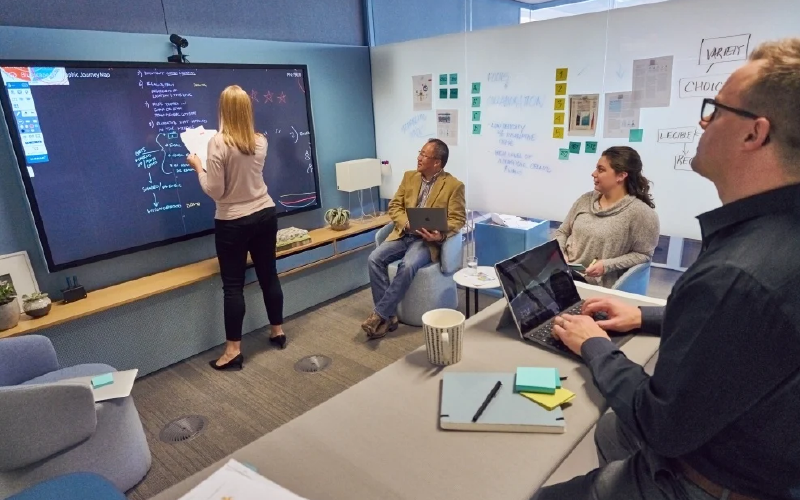
3. Technology and design are soul mates.
Technology is no longer just the “stuff that sits on your desk.”
Decades ago, the dominant sound of the office was clacking typewriter keys. Then came the softer clicks of computer keyboards, the whine of dot-matrix printers and the electronic gargle of dial-up modems.
Those were the days when technology was mostly “those heavy, expensive things that sat on top of furniture.” Massive CRT computer monitors. Copy machines that filled their own rooms. The hardworking community fax machine.
Today, technology is streamlined, mobile and fully integrated with every aspect of the office.
Laptops, tablets, smartphones, wireless networks, activity sensors and smart building technologies give you more ways than ever to connect your physical space to the virtual world.
Here are two big reasons not to skimp on technology:
First, today’s workforce demands the best tools for the job. If you’re trying to woo today’s top talent with 5-year-old computers, your competition will thank you and your employees will leave.
Second, there’s no better way to improve productivity and boost profits than with a finely-tuned tech strategy.
Invest in systems that make communication and collaboration more efficient. Choose tech that makes sense for your business and makes life easier for your employees. Don’t make any major design decisions about furniture or space without factoring in how technology can improve those decisions.
Your list of options grows longer every day: responsive lighting, raised-access floors, interactive whiteboards, video conferencing walls, augmented reality and the ever-expanding world of IoT (Internet of Things).
Whatever changes or additions you make, keep an eye on the future. Make certain that what you put into place today can adapt, grow and evolve for tomorrow.

4. Culture starts with you.
Great corporate culture comes from a team effort, but it always starts at the top.
Culture doesn’t appear magically once the bean bag chairs and ping-pong tables are installed. Culture is a product of strong leadership, clear vision, shared values and consistent actions.
Your vision and mission should come first.
Before the building. Before the first piece of office furniture.
If you’re a CEO, think of yourself as a farmer with a fertile plot of land. You wouldn’t just throw handfuls of seeds into the soil and wait to see what happens. You choose your crop, prepare the field accordingly and cultivate.
If you’re growing tomatoes, you add cages and stakes. Green beans need something to climb. And if you want corn, you should plot blocks of at least four rows.
What kind of culture seeds do you want to plant?
If you want a creative culture, you make colorful design choices and include plenty of hands-on areas. If you want a place where innovation thrives, you create group spaces and deep-thinking silos. If you want a healthy work culture, offer great food and fitness options.
Start with what matters and see what grows.
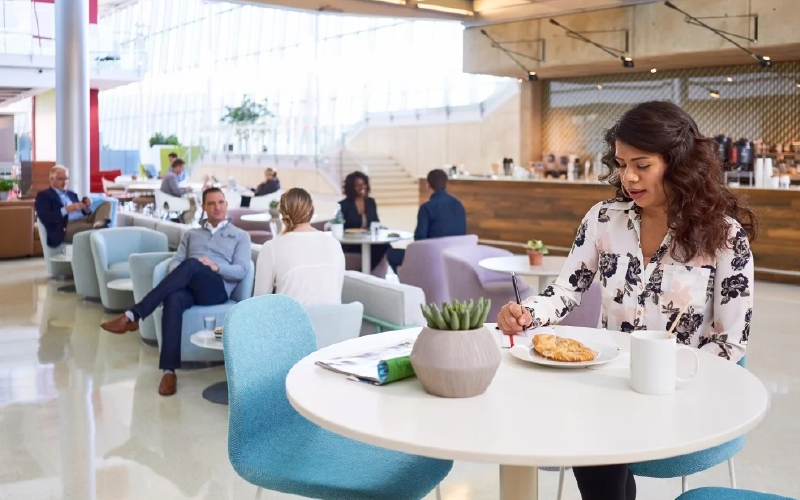
5. Workplace design is a journey.
“A painting is never finished –
it simply stops in interesting places.”
– Paul Gardner
Designing a great workplace isn’t any different than creating a work of fine art.
Both take vision, skill and talent. They are both about creating something with raw materials that communicates bigger ideas and emotions. And no matter how much you prepare, every time you approach a canvas, you can’t always expect to knock out a masterpiece.
Mistakes will be made.
You might find that what appeared to be a brilliant idea for a brainstorming lounge is more often used for client meetings. Maybe the open concept for the marketing teams has become a noisy, dysfunctional disaster. And it might be time to admit that what was supposed to be a “team-building centerpiece” has turned into The World’s Loneliest Foosball Table.
No problem. Remain calm. Regroup, rethink and adapt.
Your workplace, much like the modern world of work, will always be in a state of flux. As long as you accept that from the start (and prepare accordingly), the effectiveness of your office space will only improve.
Just remember this modern workplace mantra:
Maintain an agile mindset.
Measure often.
Celebrate what works and fix what doesn’t.

